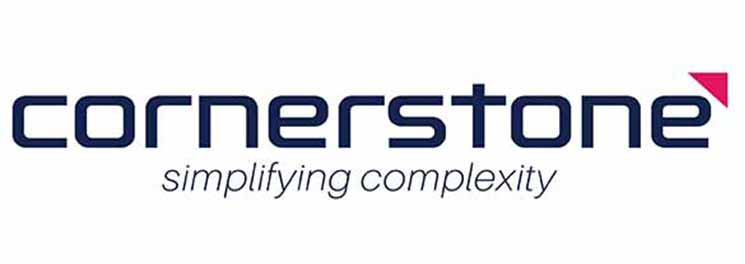
How AI can change the game in workforce management
Artificial intelligence and machine learning is increasingly moving up the value chain as organisations see its potential to support in workforce planning and management.
As organisations increasingly look to automation to replace manual effort with more efficient processes driven by artificial intelligence, they are also looking at how to better harness AI to improve how they leverage workforce data to remain competitive.
AI deployments tripled in 2019 and 37% of organisations surveyed said they had implemented AI in some form. According to Gartner research, it is expected that by 2023, 60% of large enterprises will have invested in digital transformation projects to automate administration of human capital management (HCM) tasks, while by 2025, 60% of mid-size and large enterprises will have invested in cloud-deployed HCM suites for administrative and talent management. However, most will still need to source 20-30% of their HCM requirements via other solutions.
Much of that investment will cover the core functions of HR admin, HR Service management (HRSM), talent management and workforce management (WFM).
However, business leaders are focusing on how to best analyse and leverage the data that is available within their HCM platforms, particularly in the context of wider organisational data and operations planning from a financial modelling perspective.
Few business leaders could have anticipated the wide-scale challenges that the global coronavirus pandemic delivered, however the significant shifts in how workforces need to function shone the spotlight the need to maximise the efficiencies not only in the workforce itself, but in the analytics and forecasting activities within organisational workforce planning.
As digital transformation projects begin to supercharge the shift towards a ‘predictive’ capability in forecasting and planning, many organisations are faced with the twin challenges of engaging the right data science and analytics skills to drive change while also recognising that transformation projects are notorious for their failure rates. As the need to be more adaptive and utilise real-time data intensifies, how can organisations change the game with workforce management?
Where data, people, and process intersect: A ripe AI opportunity
The intersection of data, people, and process is a ripe opportunity for AI-enabled technologies to significantly improve the way organisations manage their workforces, provided they are able to harness the full potential of artificial intelligence and machine learning — and manage its risks.
Much of the investment in Gartner’s research points to core HCM functions like:
Framing AI as an opportunity — rather than a threat — requires HCM practitioners to be willing, and courageous enough, to take a fresh look at how to use AI to improve efficiencies, cut red tape, and improve their HCM workflows. Artificial intelligence in HCM platforms can assist with tasks like scheduling, workforce optimisation, applying varying award rates and EBA agreement rates, and managing the needs of personnel against ongoing business requirements.
It is critical that the adoption of AI-enabled HCM technologies don’t become the whole story. For AI to be truly useful, it needs to be thoughtfully designed and fit for purpose across organisational forecasting. For most organisations, that is enabling efficient reporting that delivers highly valuable insights and modelling capability.
Going beyond the HR data / analytics silo
Organisations are looking at how to unify their data from the numerous data streams that can influence how it makes decisions about its workforce planning and management, which is not dissimilar to how it may look at customer engagement analytics.
AI-enabled analytics can pull data from dozens, if not hundreds, of sources and offer insights and predictions about what works and what doesn’t, based on modelling that the business does to address its specific problems or needs. It can also deep dive into the data to produce detailed insights in particular areas of the business that impact workforce decisions.
What this allows business leaders to do is automate processes for more reliable decision making, yet provide:
Data analytics, AI, and machine learning can all be engaged to produce these insights, by examining the data to identify patterns, highlight trends, and enable interrogation of the data to anticipate outcomes from different perspectives within the business.
However, considering the disparate systems and processes that an organisation uses to create, use, and control its workforce management capability, the scale and duration of change in implementing AI as part of workforce planning transformation can be challenging for users.
Don’t underestimate change management as part of successful AI, data or analytics project delivery
Data and information management projects have high failure rates. Whilst skill shortages are often cited as an impediment to AI projects, there is also an implementation challenge.
Despite the potential of AI to change the game for workforce planning and analytics, these are not easy projects to scope, develop, or successfully deliver. In fact, most data and analytics projects are inherently complex by the simple fact that they require the integration of disparate systems, shifts to cloud-based platforms, and moving vast amounts of data. Project management skills are, of course, vital, however there is a subset of data project management capability that is often under-recognised and under-valued when it comes to successfully delivering AI and digital transformation projects.
All too often, organisations undervalue the role of change management and the experience of data specialists who understand just how critical change is in digital transformation.
For any organisation to maximise the impact of integrating AI and data-driven workforce planning and analytics, leveraging that experience is critical as is bringing stakeholders and users along for the change journey.
Cornerstone has delivered Workforce Planning and Integrated Planning solutions to both mid-size and enterprise customers in Australia’s as well as some of the world’s largest global brands. We partner with IBM to deliver Planning Analytics with Watson across many aspects of business performance management. For more information about our workforce management and planning capability, please contact us.





